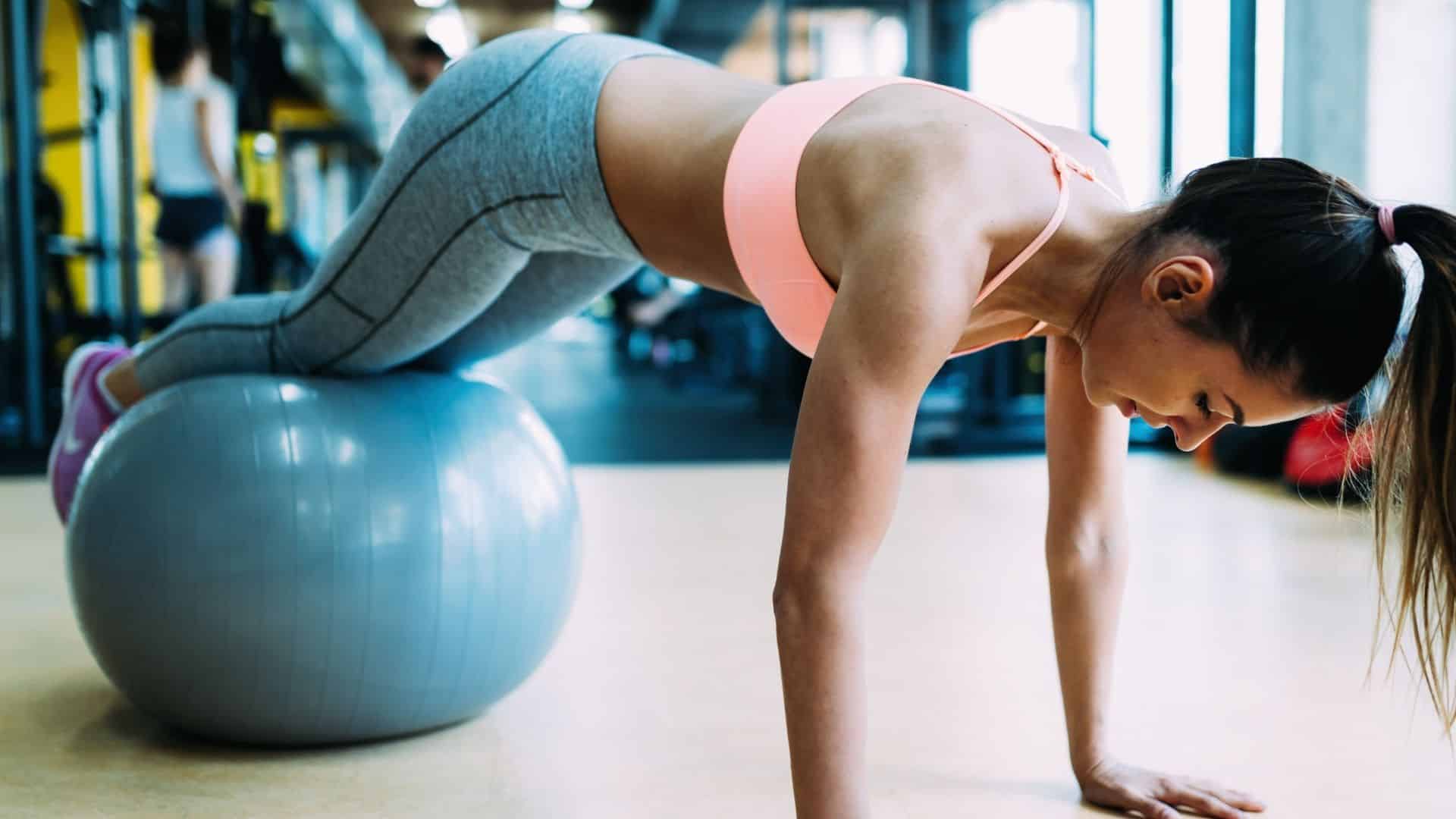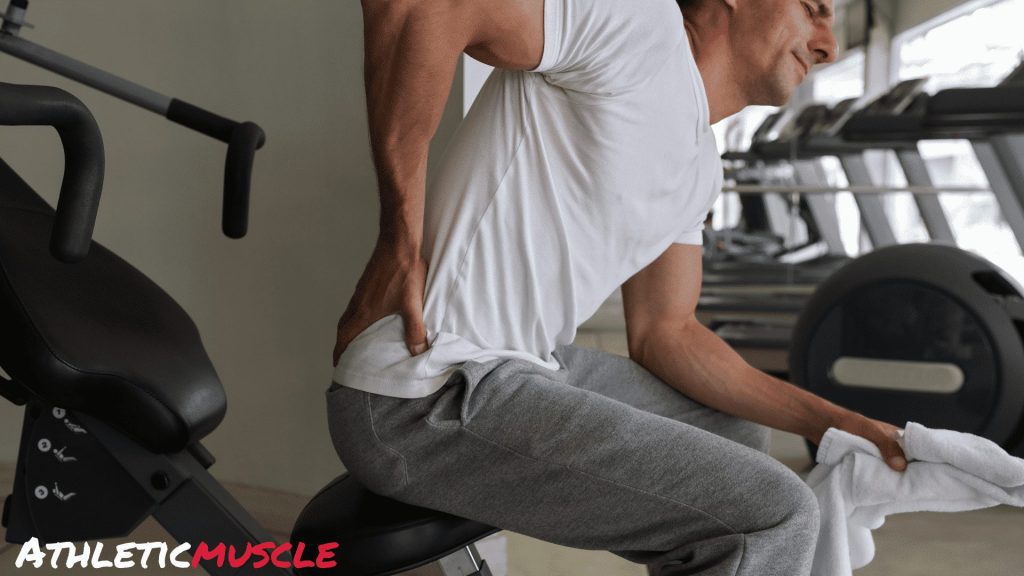When you’ve first begun your workout, protecting your back was maybe the last thing on your mind. However, the back or your spine grants the body the gift of mobility. That’s why it’s essential not to neglect it as it’s the outlet for your central nervous system
Unfortunately, most people who regularly work out often don’t know they’re already exposing their back to possible injuries by not doing their routine properly. On the other hand, those aware of the potential injuries usually take naturally-sourced supplements to improve strength and increase tolerance for intense exercises. For information on these supplements, read more here and browse through other similar sites.
What’s In This Guide?
Complete Your Workout Routine Without Hurting Your Back
2. Practice Proper Breathing And Body Form When Weight Lifting
4. Avoid Too Much Strain On Your Back
6. Aim To Improve Your Overall Health
Complete Your Workout Routine Without Hurting Your Back
Taking steps to protect your lower back entails avoiding direct damage, preventing indirect trauma, and controlling the progression of its existing problem. To get you started, here are some of the best practices to ensure your back is safe against possible injuries while working out:
1. Develop A Strong Core
Developing a strong ‘core’ area is an excellent way to reduce back injury. Your core is a group of muscles that begins in your midsection and stretches beyond your abs. This includes abdominal muscles like the transversus, rectus, obliques, and psoas. It also extends to the back muscles like the paraspinals and quadratus lumborum. Since your core stretches to your lower back, keeping this area tight will ensure your back is protected and not overworked.
To keep your abs engaged, you can try squatting with weight, deadlifting, and doing hard curls as much as possible. Other examples of effective core-building exercises to strengthen both adult and older adults’ core include:
Ball Workouts
Stability ball workouts are great as you may also use it for stretches and exercises that engage the core muscles. Alternatively, you can sit on a stability ball while you are at your desk. This is a great alternative to sitting in a desk chair all day. It will force you to keep your back in a neutral position that does not allow you to hunch over, which can later lead to neck tightness.
Read Also: The best Calisthenics core and abs workouts guide

The Bicycle
Begin by lying on your back on a mat. Your knees and feet should be at a ninety-degree angle raised off the ground.
Then, put your hands behind your neck. Raise your shoulders and upper back off the mat and lean slightly to the left side. Bring your left knee into your chest so it’ll almost touch your right elbow. Do this with the other side.

Bridges
The gluteus maximus, or broad muscle in the buttocks, can be strengthened by the bridges exercise. When people move their hips, particularly when bending into a squat, this muscle is activated. As a key muscle in the body, keeping it tight will help support and strengthen the lower back.
To do the bridge exercise, lie on your back and bend your knees. Then, put your feet flat on the mat, making sure that they aren’t too far apart. Your spine should be in a straight line, starting from chin to knee. Put your heels onto the mat and then push up to form a single straight line. You can stay in this position for few seconds before putting yourself back down against the mat.
Strengthening the core muscles can help prevent back pain. This in turn, can keep your spine from hurting.
Read Also: Bodyweight back exercises you can do at home

2. Practice Proper Breathing And Body Form When Weight Lifting
Deadlifts are a good exercise for strengthening your back. However, using your back muscles to lift most of the weight instead of the stronger muscles in your lower half is a common mistake. This can cause extreme pain.
To avoid this from happening, ensure to retain proper form when lifting. This will help align your spine and put all of the weight into your legs, keeping your back safe from possible injuries.
Proper breathing is also one of the most basic ways to protect your back. You may be tempted to hold your breath when lifting weights, but don’t give in. Take a deep breath and breathe out while lifting and lowering the weight.
It would feel easier for your body to lift the weight if you breathe properly. This means you’re less likely to stop breathing and curve your back, putting effort into the wrong muscles. Doing so can lead to back injury and discomfort.
Read Also: Lower back injury from Squats – Injury prevention, and How to recover
3. Warm-Up
Many back pain problems arise when pressure is applied to the spine without warming up. When you’re short of time, it’s easy to skip right to the main activity like cardio and strength training.
However, starting slow is shown to gradually increase blood flow and warms the muscles, making them more pliable and ready to function. Your muscles, including those strengthen and protect your spine, will be stiffer and more vulnerable to the strain if you don’t do warm-ups first. This makes your back prone to injuries.
Thus, to avoid these, you can do mild exercises for about ten minutes. Gentle trunk rotation, arm circles, shoulder rolls are good starters to gradually prepare your whole body, especially your back.
Read Also: Warmup with these calisthenics exercises to prevent injury
4. Avoid Too Much Strain On Your Back
Working out has many beneficial effects on human health, but do you know that there are some types of exercises that might just put too much strain on your backs’ ligament, muscles, and joints? Below are some exercises that you may avoid to protect your back while working out.
Sit-ups
Sit-ups might strengthen your abdominal muscles, but they can also place a lot of pressure on your spine, putting you at risk for disc herniation injuries. Your curved spine will be pushed against the floor when you do sit-ups, and the hip flexor muscles are engaged. These are the muscles that connect the thighs to your lower back’s lumbar spine. When your hip flexor muscles are too hard or too tight, they can pull on your spine, which results to lower back pain. Instead of doing sit-ups, you may try doing partial crunches. It’s effective at isolating the abdominal muscles while avoiding low back injury.
Read Also: Exercises you should avoid after 40. Do these instead.
Standing Toe Reach
Hamstrings are tendons at the back of your thigh. Tight hamstrings are very common and can cause back pain. Thus, stretching is vital for avoiding injury and reducing muscle soreness after a workout.
Also, standing toe touches can aggravate an existing back injury by compressing the spine beyond its safe limits. Therefore, replacing standing toe reach with towel hamstring stretch may help reduce pelvic pressure and give the relief through your low back.
Double Leg Lift
Back pain can be effectively managed by strengthening your core. However, it would be best to avoid some core strengthening exercise, like a double leg lift.
Your lower back is put under a lot of strain when you do double leg lifts. If you’re wondering how it’s done, double leg lifts require you to lift both legs together when lying on your back.
Instead, why not do a single leg lift? You may bend one knee with your foot on the ground while lying on your back and keeping the other leg linear. Slowly lift and keep the straight leg while lowering your knee.
Repeat ten times, or as needed depending on your routine. Keep your back flat on the floor the whole time you’re doing this exercise.
Read Also: Back strengthening exercises for seniors
5. Avoid Bending Forward
It might seem simple, but avoiding bending forward when lifting any weight when working out can do wonders. When doing back-stretching exercises like deadlifts, squats, hang cleans, and others, you may feel compelled to bend over to pick. This practice is one of the worst things you can do to your back.
When doing the reps, exercise puffing out your chest and holding your back as straight as possible. Ask someone to watch you to ensure you’re executing the right form. When performed correctly, these activities can be beneficial.
Remember too, people with lower back pain should also look at their overall stance and how they hold large items to see if there are motions that are causing the pain.
Related: Top 6 Best Weight lifting belts for CrossFit
6. Aim To Improve Your Overall Health
Although you might tend to forget the importance of protecting your back while working out, the good thing is, there are other things that may help you keep it healthy. Your lower back is said to be influenced when you increase your overall physical strength and general health. Simple steps like drinking plenty of water, having enough deep, restorative sleep, and eating an anti-inflammatory diet may help reduce the chronicity, progression or flare-up of your lower back pain.
Ultimately, it’s always important that anyone with extreme lower back pain that doesn’t improve with gentle stretching, therapy, posture, and proper diet, should schedule an appointment with their doctor.
Read Also: The CrossFit Diet Guide to help you reach your potential
Takeaways
There are many ways to protect your back from injuries and pain, especially when exercising. For heavy weight lifting, remember that proper breathing, posture and body form play a huge part in protecting the most vulnerable part of your body. Thus, ensuring you practice and retain good posture while working out.
Remember there are also exercises that may harm your back and other parts of your body as well. Avoid these types of exercises or replace those with safe alternatives like those mentioned above. Lastly, bending your back forward while lifting or while doing routines might seriously damage your spine when things go wrong.
Keep in mind your body has its limitations. It’s not worth to prioritize some routines trying to improve your body parts, while damaging the others.

